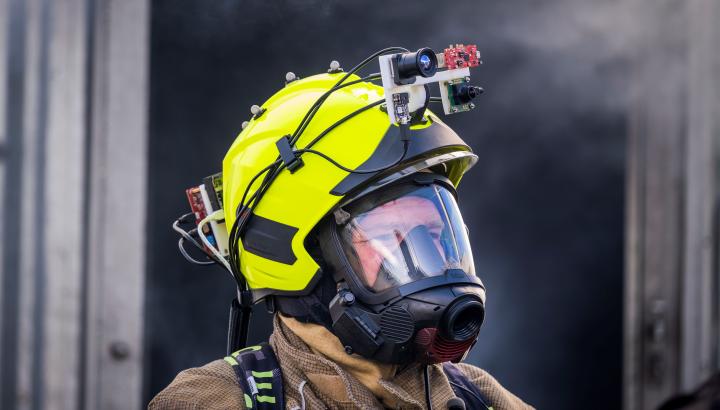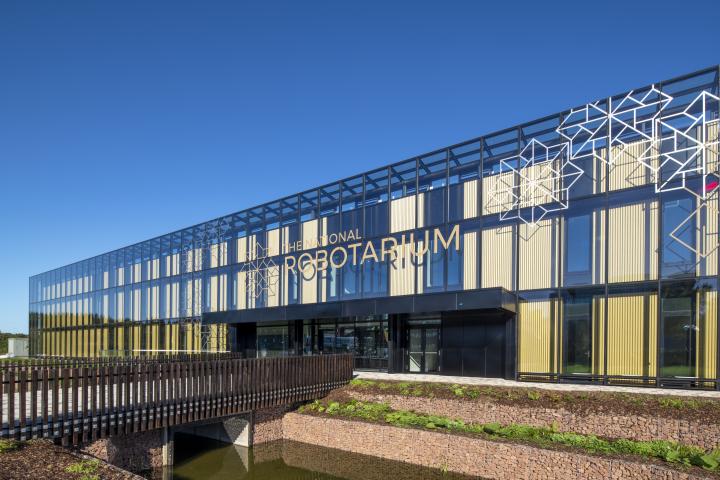AI fire helmet
Pioneering technology developed by Edinburgh researchers could help firefighters more quickly map their surroundings, navigate hazardous environments and get people to safety.

The device uses artificial intelligence (AI) to combine data from thermal imaging cameras, radar and other sensors mounted on standard-issue fire helmets, giving firefighters real-time information from fire scenes.
It is hoped the technology could help emergency services more safely navigate dangerous or low-visibility conditions and reduce the time it takes to rescue victims.
The technology is being developed by researchers in the School of Informatics with support from the National Robotarium, a world-leading centre for robotics and artificial intelligence.
Fire sensors
Field trials of the new technology have been conducted with members of the Scottish Fire and Rescue Service at their £10.5 million training facility in Newbridge, Edinburgh.
The entire sensor rig weighs less than one kilogram and uses affordable, off-the-shelf parts that are easy to fit to standard-issue fire helmets.
The team aims to develop the technology further to give the helmet the ability to create 3D maps and to provide wearers with a built-in display screen.
This new technology has the potential to support on-the-ground firefighters and scene commanders to make crucial in-the-moment decisions that can enhance search rescue efficiency, ensure safer collaboration between teammates and, most importantly, improve outcomes for potential victims of fire scenes.

The launch of the AI fire helmet technology comes as the National Robotarium’s new £22.4 million facility officially opens its doors.
The National Robotarium is a partnership between the University of Edinburgh and Heriot-Watt University. It brings together researchers and businesses applying AI and robotics research to areas including hazardous environments, offshore energy, manufacturing, healthcare, assisted living and agritech.
Robotics centre
The new facility – part of the Data-Driven Innovation (DDI) initiative – is supported by £21 million from the UK Government and £1.4 million from the Scottish Government.
The DDI initiative forms part of the wider £1.3bn Edinburgh and South-East Scotland City Region Deal, which aims to establish Edinburgh as the data capital of Europe.
It's great to see the pioneering minds of the National Robotarium working with the Scottish Fire & Rescue Service on developing this life-saving kit. Anything our world-leading scientists can do to keep them safe and ensure people are saved as quickly as possible is hugely welcome.
I congratulate researchers at the National Robotarium for their partnership with Scottish Fire and Rescue Service to design innovative new smart helmet technology. This has the potential to improve firefighters’ safety as they enter hazardous environments and save lives.
Related Links
Fire helmet image credit: Chris Watt Photography / National Robotarium image credit: Paul Zanre

